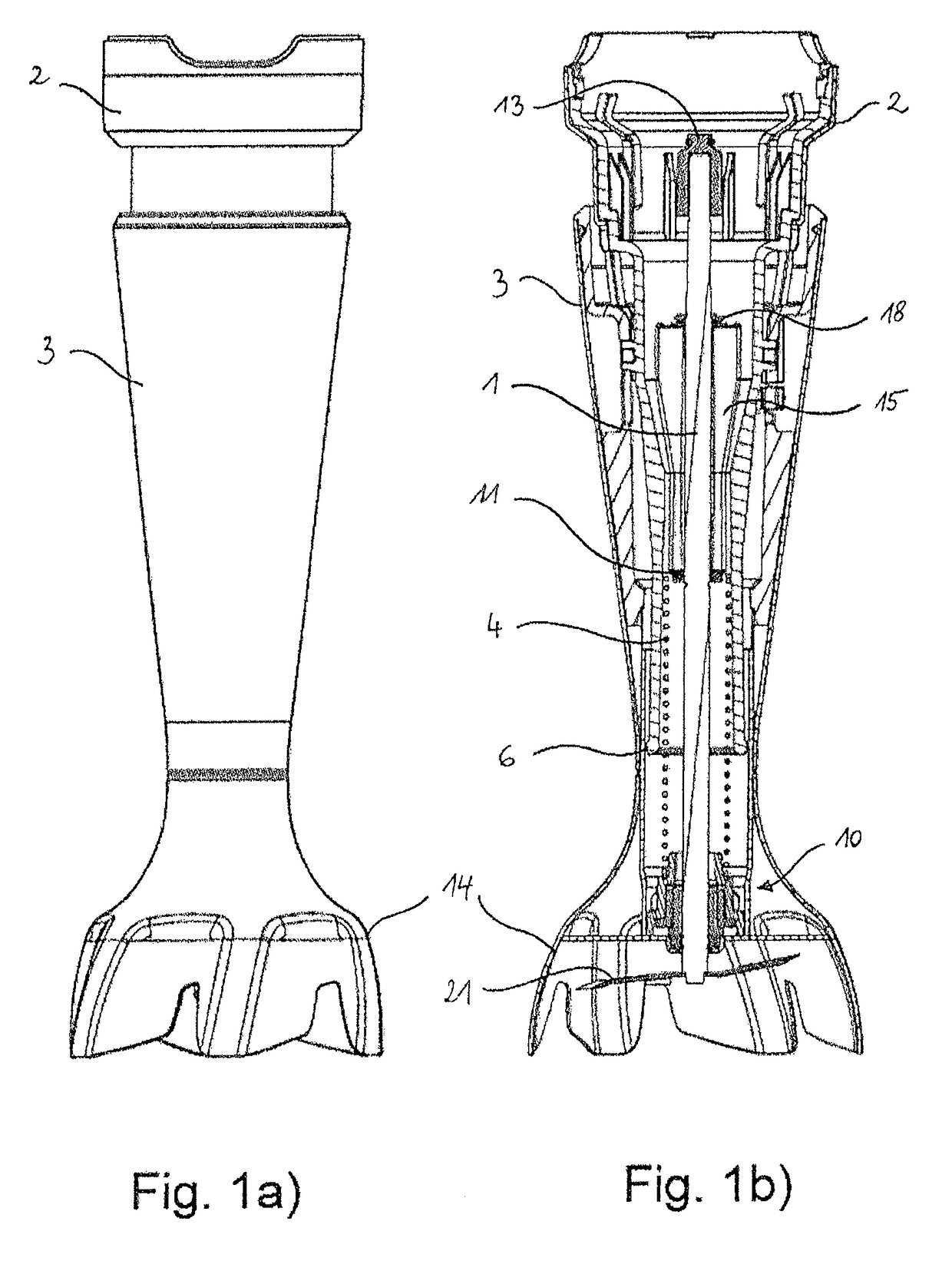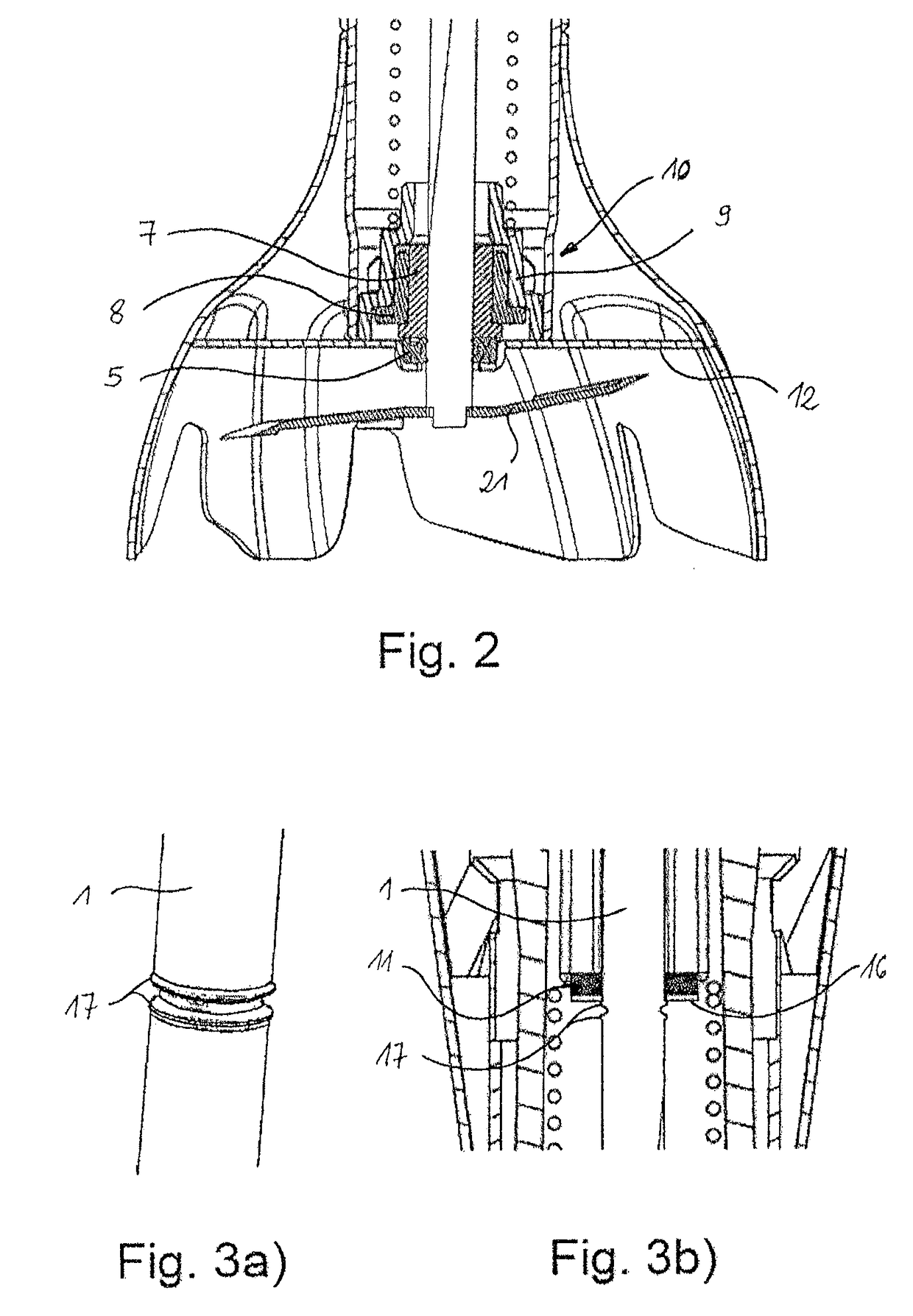Implement with telescopically movable stem for stirring or comminuting food
- Summary
- Abstract
- Description
- Claims
- Application Information
AI Technical Summary
Benefits of technology
Problems solved by technology
Method used
Image
Examples
Embodiment Construction
[0040]FIG. 1a) shows a lateral view of the stem of an implement according to the invention, in this example a hand blender. The stem is divided into an inner assembly 2 and an outer assembly 3. The inner assembly 2 is capable of moving telescopically into and out of the outer assembly 3. As can be seen in the longitudinal sectional view of the stem in FIG. 1b), the shaft 1 is guided in the inner assembly 2 and is supported therein by means of an axial bearing 11. In addition, the inner assembly 2 is configured so that it can be detachably coupled with the hand blender motor housing (not shown here), which simultaneously forms the handle for the user, wherein no relative movement is allowed between motor housing and inner stem assembly 2 in the coupled state. This also connects the shaft 1 with the motor shaft via the shaft coupling 13.
[0041]At the lower end of the outer assembly 3 there is a bell-shaped shield 14 for the cutter 21 (working part) attached to the bottom end of the sha...
PUM
 Login to View More
Login to View More Abstract
Description
Claims
Application Information
 Login to View More
Login to View More - R&D
- Intellectual Property
- Life Sciences
- Materials
- Tech Scout
- Unparalleled Data Quality
- Higher Quality Content
- 60% Fewer Hallucinations
Browse by: Latest US Patents, China's latest patents, Technical Efficacy Thesaurus, Application Domain, Technology Topic, Popular Technical Reports.
© 2025 PatSnap. All rights reserved.Legal|Privacy policy|Modern Slavery Act Transparency Statement|Sitemap|About US| Contact US: help@patsnap.com



